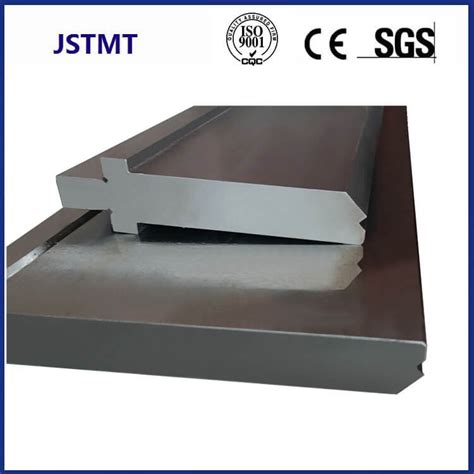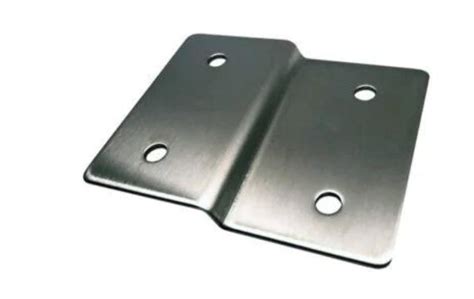a joggle sheet metal In press brake forming, the work piece is positioned over a die block and a punch then presses the sheet into the die block to form a shape. Usually bending has to overcome both See more One of the most common methods of joining two pieces of metals together is through welding. However, there are several alternatives to welding methods that can be used to do this. It is possible to join metal pieces by methods like riveting, soldering, bolting or brazing.
0 · shrinking sheet metal by hand
1 · sheet metal joggle tool
2 · sheet metal joggle examples
3 · sheet metal edge distance
4 · lightening holes in sheet metal
5 · identify a characteristic of bending
6 · forming sheet metal by hand
7 · forming joggles in sheet metal
Welding thin metal is challenging. There is no denying that. But, if you practice and use the tips we shared in this article, you’ll get the best chance for success. After you inevitably burn through some scrap sheets of metal and warp others, you’ll gain more experience and learn . See more
Joggling, [5] also known as joggle bending, is an offset bending process in which two opposite bends with equal angles are formed in a single action creating a small s-shape bend profile and an offset between the unbent face and the result flange that is typically less than 5 material thicknesses. [6] See moreBending is a manufacturing process that produces a V-shape, U-shape, or channel shape along a straight axis in ductile materials, most commonly sheet metal. Commonly used equipment include box and pan brakes See more
Many variations of these formulas exist and are readily available online. These variations may often seem to be at odds with one another, but . See more

• Bending (mechanics)• Tube bending• Press brake• Brake (sheet metal bending)• Bending machine (manufacturing) See moreIn press brake forming, the work piece is positioned over a die block and a punch then presses the sheet into the die block to form a shape. Usually bending has to overcome both See more
There are three basic types of bending on a press brake, each is defined by the relationship of the end tool position to the thickness of the material. These three are Air Bending, Bottoming and Coining. The configuration of the tools for these three types of bending . See moreBending is a cost-effective near net shape process when used for low to medium quantities. Parts usually are lightweight with good mechanical properties. A disadvantage is that . See more
shrinking sheet metal by hand
• Latang, Paul. "Bending Made Easy" Fabricating & Metalworking, February 2010.• Bend allowance and deduction calculator See more

Joggle forming is a process where multiple bends are created on a sheet metal, resulting in angles less than 90 degrees. This technique often involves bends in opposite directions and is used to create a small offset near the edge of the . A joggle in sheet metal is a small offset or bend to create an overlapping joint on a flush surface. The offset bending process creates two opposite bends with equal angles in a single action. The joggle bends are in .
A joggle, often found at the intersection of stringers and formers, is the offset formed on a part to allow clearance for a sheet or another mating part. Use of the joggle maintains the smooth .
Learn about joggling and its function. Follow our mini series for more practical tasks. . For more info visit our website https://code1mx.com and info on our .
sheet metal joggle tool
Joggle forming presses create multiple bends on sheet metal simultaneously. Often, these bends are in opposite directions and less than 90°. A joggle press works by clamping sheet metal .
Joggle forming is when multiple bends are created on a sheet metal creating an angle that is less than 90 degrees. This process mostly involves placing a sheet metal between a punch and a die. Joggle Sheet Metal Joggling is a specific metalworking technique used to create bends or offsets in sheet metal. This method is essential for ensuring proper fit and assembly .
Joggle bend requirements in sheet metal will depend on how obtuse or acute the bend angles are. You can find all specifications referenced below on each individual material page. Learn . Joggling or segmented bending is shaping a sheet metal section by section using stringers and formers. The technique is especially helpful when there is a need to bend an extended workpiece in a periodically repeated pattern.
Joggling, [5] also known as joggle bending, is an offset bending process in which two opposite bends with equal angles are formed in a single action creating a small s-shape bend profile and an offset between the unbent face and the result flange that is typically less than 5 material thicknesses. [6]Joggle forming is a process where multiple bends are created on a sheet metal, resulting in angles less than 90 degrees. This technique often involves bends in opposite directions and is used to create a small offset near the edge of the metal.
A joggle in sheet metal is a small offset or bend to create an overlapping joint on a flush surface. The offset bending process creates two opposite bends with equal angles in a single action. The joggle bends are in opposite directions and less than 90°.A joggle, often found at the intersection of stringers and formers, is the offset formed on a part to allow clearance for a sheet or another mating part. Use of the joggle maintains the smooth surface of a joint or splice.Learn about joggling and its function. Follow our mini series for more practical tasks. . For more info visit our website https://code1mx.com and info on our .Joggle forming presses create multiple bends on sheet metal simultaneously. Often, these bends are in opposite directions and less than 90°. A joggle press works by clamping sheet metal between two dies and applying pressure to create a joggle joint.
sheet metal joggle examples
Joggle forming is when multiple bends are created on a sheet metal creating an angle that is less than 90 degrees. This process mostly involves placing a sheet metal between a punch and a die. Joggle Sheet Metal Joggling is a specific metalworking technique used to create bends or offsets in sheet metal. This method is essential for ensuring proper fit and assembly in various applications, such as HVAC ducts, automotive components, and architectural elements.

Joggle bend requirements in sheet metal will depend on how obtuse or acute the bend angles are. You can find all specifications referenced below on each individual material page. Learn how to find material bending specs. Joggling or segmented bending is shaping a sheet metal section by section using stringers and formers. The technique is especially helpful when there is a need to bend an extended workpiece in a periodically repeated pattern.Joggling, [5] also known as joggle bending, is an offset bending process in which two opposite bends with equal angles are formed in a single action creating a small s-shape bend profile and an offset between the unbent face and the result flange that is typically less than 5 material thicknesses. [6]Joggle forming is a process where multiple bends are created on a sheet metal, resulting in angles less than 90 degrees. This technique often involves bends in opposite directions and is used to create a small offset near the edge of the metal.
A joggle in sheet metal is a small offset or bend to create an overlapping joint on a flush surface. The offset bending process creates two opposite bends with equal angles in a single action. The joggle bends are in opposite directions and less than 90°.A joggle, often found at the intersection of stringers and formers, is the offset formed on a part to allow clearance for a sheet or another mating part. Use of the joggle maintains the smooth surface of a joint or splice.Learn about joggling and its function. Follow our mini series for more practical tasks. . For more info visit our website https://code1mx.com and info on our .Joggle forming presses create multiple bends on sheet metal simultaneously. Often, these bends are in opposite directions and less than 90°. A joggle press works by clamping sheet metal between two dies and applying pressure to create a joggle joint.
what is the purpose of using junction box
Joggle forming is when multiple bends are created on a sheet metal creating an angle that is less than 90 degrees. This process mostly involves placing a sheet metal between a punch and a die. Joggle Sheet Metal Joggling is a specific metalworking technique used to create bends or offsets in sheet metal. This method is essential for ensuring proper fit and assembly in various applications, such as HVAC ducts, automotive components, and architectural elements.
Joggle bend requirements in sheet metal will depend on how obtuse or acute the bend angles are. You can find all specifications referenced below on each individual material page. Learn how to find material bending specs.
what is seaming in sheet metal
Before you use your MIG welder, carefully read through the operating instructions and ensure that you have your welding machine set up correctly. 1. Amperage– The first thing that . See more
a joggle sheet metal|sheet metal joggle examples